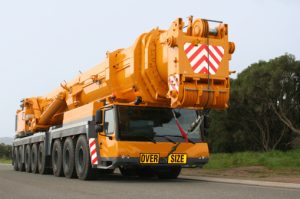7 Considerations for Estimating Construction Projects

You will find yourselves with the projects to bid. Though you could have done this type of work before; however, there is always something new such as clients who wish to make a statement with their construction projects.
So, how to begin?
Scope
What work to bid?
Consider what should be the first step. In several cases, your initial step should be Fees and Permits for construction. Permits enable you to perform the work. You can obtain permits through local agencies such as County, State, Village, Environmental Agencies, Town, and sometimes Gas Companies and Water Authorities.
If you put anything in the ground with utilities, there is more likely that somebody needs to look in the hole before you cover it up. Also, you must arrange inspections and find what they charge if anything is included in a permit fee?
Do you have approved drawings? For using a set of drawings to bid, they should be in the records and should not leave the business premises.
Now you may go to complete erosion control, mobilization, strip topsoil, etc. Basically, you build step by step including every object on the job until you are done.
Labor
Who and what type of individual do you need for every item you have put together? Will, there be one group that will do everything, or will specialized personnel will come into the project?
Usually, you will need a couple of laborers to mobilize. However, you may need a group of ten to move the cut to fill.
Labor is perceived to be a liability that needs careful consideration. Every minute a person is on the job, you are liable for those persons. Also, you have to look after all the related expenses linked with people like insurance and transportation to jobs.
This is the point where the issue of burden and overhead starts to arise. Labor is referred to as a “Checkbook Item”. You as a firm will make a check for that amount other than your profit and overhead. Miscalculation of labor expenses will make you feel worried about profit.

Equipment
What kind of Equipment do you need to complete the task? There is a range of specialized construction equipment designed for specific tasks such as cranes from top mobile crane manufacturers. Further, important machinery includes bulldozers and rollers.
Do you own this equipment or is it a rental? If you have the ownership, you need to know what cost you will need to bear. Fuel, maintenance, replacement costs, and insurance should all be considered. Also, an hourly rate for that machine can be determined.
Decide if the machine such as rough terrain cranes for sale is to be charged against the job when idle or is it the firm’s overhead cost.
Renting specialty equipment is far more efficient than owning a machine that sits more than it works. Every machine, from a cutoff, saw to a concrete plant, has a cost. It is your responsibility to ensure that it is included in the bid.
Subcontractors
Oftentimes, there is a need to involve specialty companies. Sometimes they own specific equipment for a single task such as air conditioning, pavements, heating, or landscaping, and granite curbs. These costs are also a liability for your firm.
So, you should go for a “Qualified Subcontractor” (Insured and Competent). Subcontractors are responsible for their profit and loss on a job; however, it’s key that they perform the overall project as promised.
If a paving subcontractor doesn’t come as per the schedule and a storm destroys the prepared grade; it will cost you money. Once the sub is confident that he has an obligation but no profit left on your project, the situation will only get worse.
A nonperforming or underperforming sub can quickly destroy the cooperation and flow on a project, both of which will cost you money. Debating scope with that Sub in the middle of the project is a sure way to promote discontent and unproductive behaviors from them. Make sure you have your takeoff and at least two quotes.
Imagine what you will be doing after and before that Subcontractor performs their work? Even insignificant jobs, sometimes, require a schedule and that affects your bid. So, know that and deal with that. Don’t move on until you put a price on it.
Materials,
This is a significant part of your job that needs an accurate takeoff. You have to know the materials while covering them at your cost. Also, make sure that someone else is responsible. Not getting onsite materials because they were not present in a bid is nothing but a disaster on different levels.
Don’t use zero placeholders regarding materials. Alternatively, if you want a price for steel or stone and it is pending, but the best price in the space. Many programs will do that while you simply update the database for the material throughout the bid. Don’t leave or type zero and move on.
Consider whether the sales tax is applicable or not? If it’s applicable, it would be required on materials. How about scheduling required for delivery? Is it available at the time you require it? Is there special equipment to put materials and do you have that in your bid?
Alternates
Alternates can be deducted from or added to the bid. However, it is common to see them used as “Chess Pieces” for affecting the overall project cost. Sometimes, alternates are included at zero extra cost to lower the price and give the customer more value, even though they are not low on the base bid. Usually, that’s not the responsibility of the Estimator to take that decision; however, he will need to account for the costs.
Final Bid
This might not be in the estimator’s hands anymore. Overhead and profit might be put on here and might not be available to the estimator. They have everything else covered.





